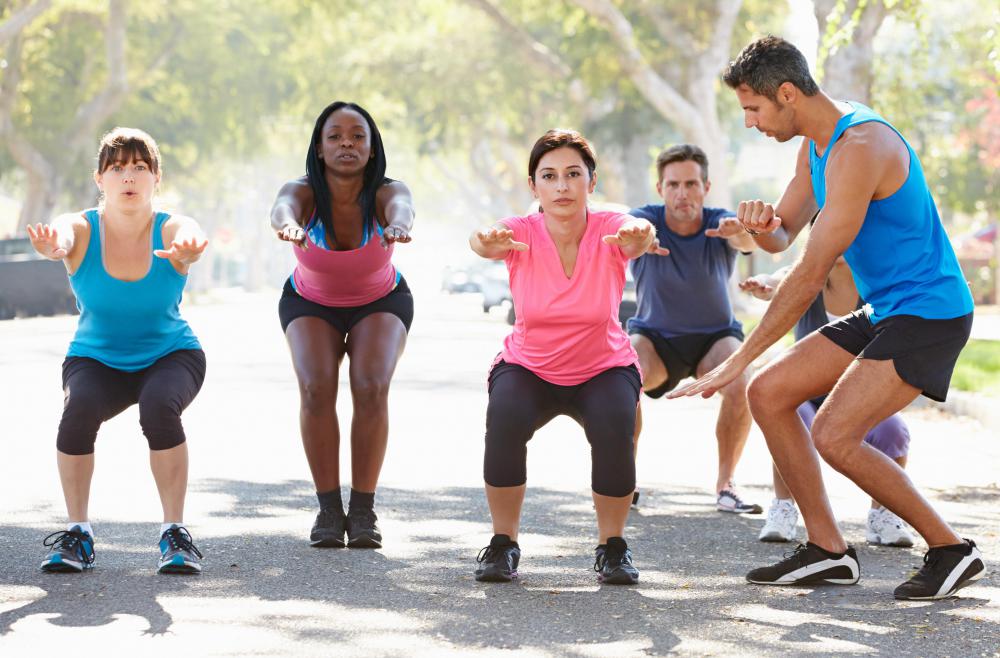At TheHealthBoard, we're committed to delivering accurate, trustworthy information. Our expert-authored content is rigorously fact-checked and sourced from credible authorities. Discover how we uphold the highest standards in providing you with reliable knowledge.
What Is Lipolysis?
Lipolysis is the process of the breakdown of fatty acids or lipids by a chemical reaction with water involving triglycerides. Due to hydrolysis, lipids and triglycerides are further broken down chemically into metabolic molecules known as acetyl units. Ketones are then produced as a by-product and indicator of the breakdown of lipids and triglycerides.

The breakdown of lipids is induced chemically by hormones or phospholipids. Hormones such as cortisol, epinephrine and testosterone trigger protein receptors to activate hormone sensitive enzymes. A chemical chain reaction involving a messenger molecule activates protein kinase A (PKA), which regulates sugar and lipid metabolism. PKA then activates a water-soluble enzyme called lipase that breaks down fats in adipose tissue, or body fat.
Triglycerides aid the lipolysis process in the body further by using lipoproteins or cholesterol molecules to transport the fat in the blood to adipose and muscle tissue. The breakdown of triglycerides by lipase cells in body fat produces free fatty acids. Usually, remaining free fatty acids bind to proteins and enzymes to either be absorbed or discarded from the body.
As a result of lipolysis’ fat dissolving process, it is used in controversial cosmetic applications. In the cosmetic setting, the fat dissolving procedure is used to break down diet or exercise resistant fat in the body. Generally, only localized small to medium sized areas of fat are dissolved due to the risk of developing ketosis — an elevated level of ketones in the blood associated with abnormal fat metabolism. Since the fat dissolving process occurs chemically, the cosmetic procedure is non-surgical in nature.
A cosmetic professional will directly inject phosphatidylcholine (PPC), a type of phospholipid, subcutaneously into the fat tissue. Much like the hormones the body produces, PPC will help to induce lipolysis in order to dissolve unwanted fat. To avoid ketosis, PPC injections are administered over the span of a few months. Treatment length will largely depend on the amount of fat that needs to be removed.
Minor to moderate side effects have been known to occur with the lipolysis cosmetic procedure. Common minor side effects include soreness, bruising and mild swelling. Some patients have experienced nausea, gastrointestinal distributions and infection after treatment. The US Food and Drug Administration (FDA) has reported that permanent scarring, skin deformation and painful subcutaneous knots were experienced by some people after undergoing the fat dissolving procedure. To avoid serious side effects, people who have allergies, blood disorders or kidney diseases should not undergo the procedure.
AS FEATURED ON:
AS FEATURED ON:











Discussion Comments
So, wait - does this mean that you can get the injections if you're on a keto diet?
@pastanaga - I don't think people question the right of the person to do what they want to their own body (within reason). But, often people who are assaulted from all sides by modern media develop a warped sense of what is "normal".
And if it is used in a way that keeps them healthy, then that's great. Eating well and exercising is something everyone should try to do.
But, when people are striving to become something that hardly anyone can achieve, I don't think it's a healthy goal.
And procedures like lipolysis seem like they might be taking advantage of that desperation to me.
@croydon - Well, I agree with you to some extent, but you know, societies pressures are enormous. There are other societies where there is pressure to be fat and people go to extreme lengths to achieve it as well.
I think it all depends on the person. We don't bat an eye at someone who decides that rock climbing is what will make them happy, even though there are risks involved in that.
So why is a procedure that will change the way someone looks and possibly make them happier so looked down on?
I think it's pretty natural to want to look the best you can, and in this society, that means being skinny.
Every time I read about something like this it makes me sad. It's one thing to say that people ought to try and be fit and healthy and to avoid being obese. I can get behind that kind of message, for sure.
But, this seems like the kind of procedure that can only be used cosmetically. Even liposuction, in theory, could be useful as a method of reducing harmful amounts of fat.
In this case, since only small amounts can be reduced anyway, it seems like the only purpose is to try and shape the body, using a dangerous method.
It just makes me sad that people can't just look at themselves and see a human being, rather than a body that doesn't match up to a super model and is therefore deficient.
Post your comments